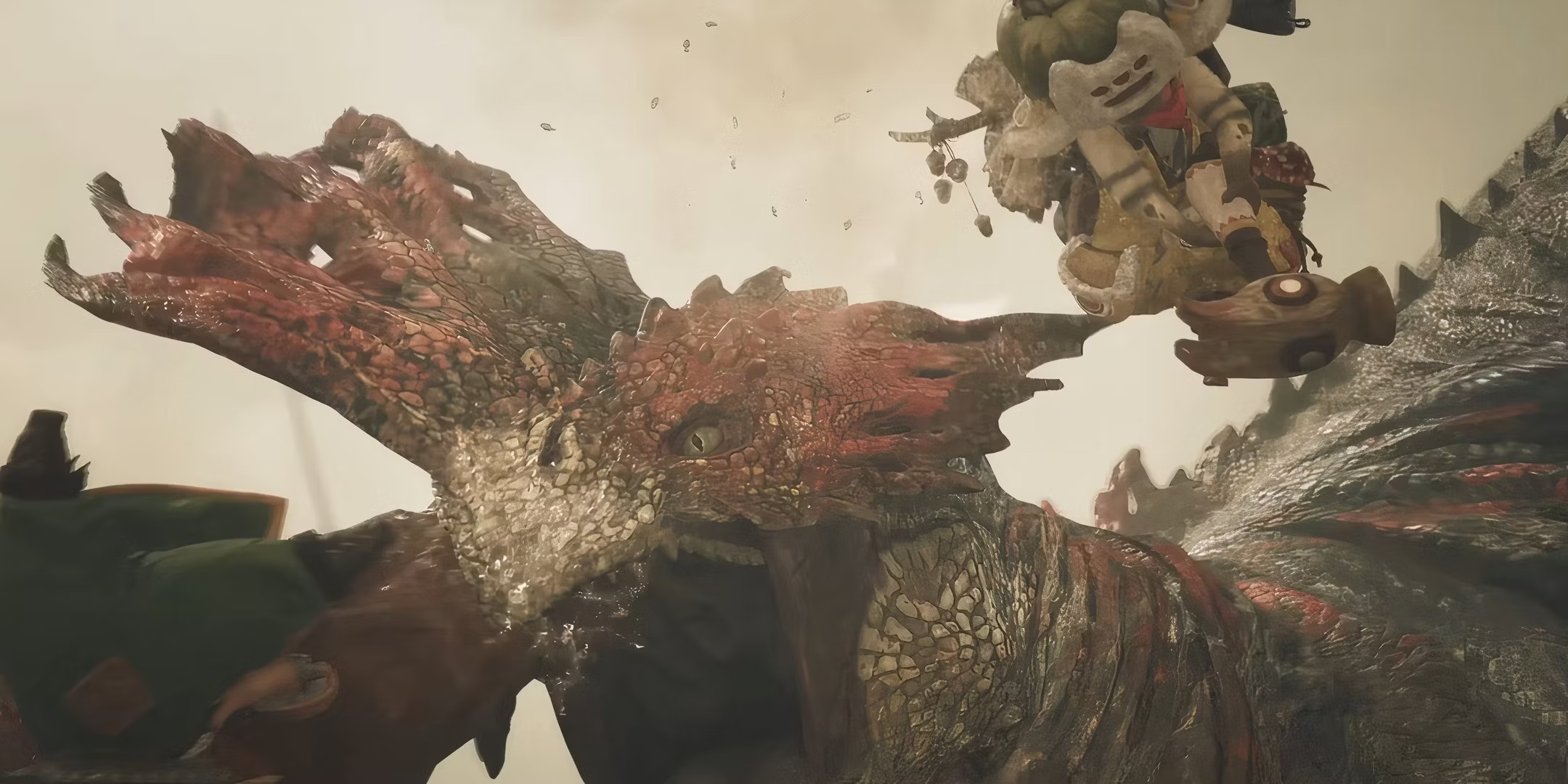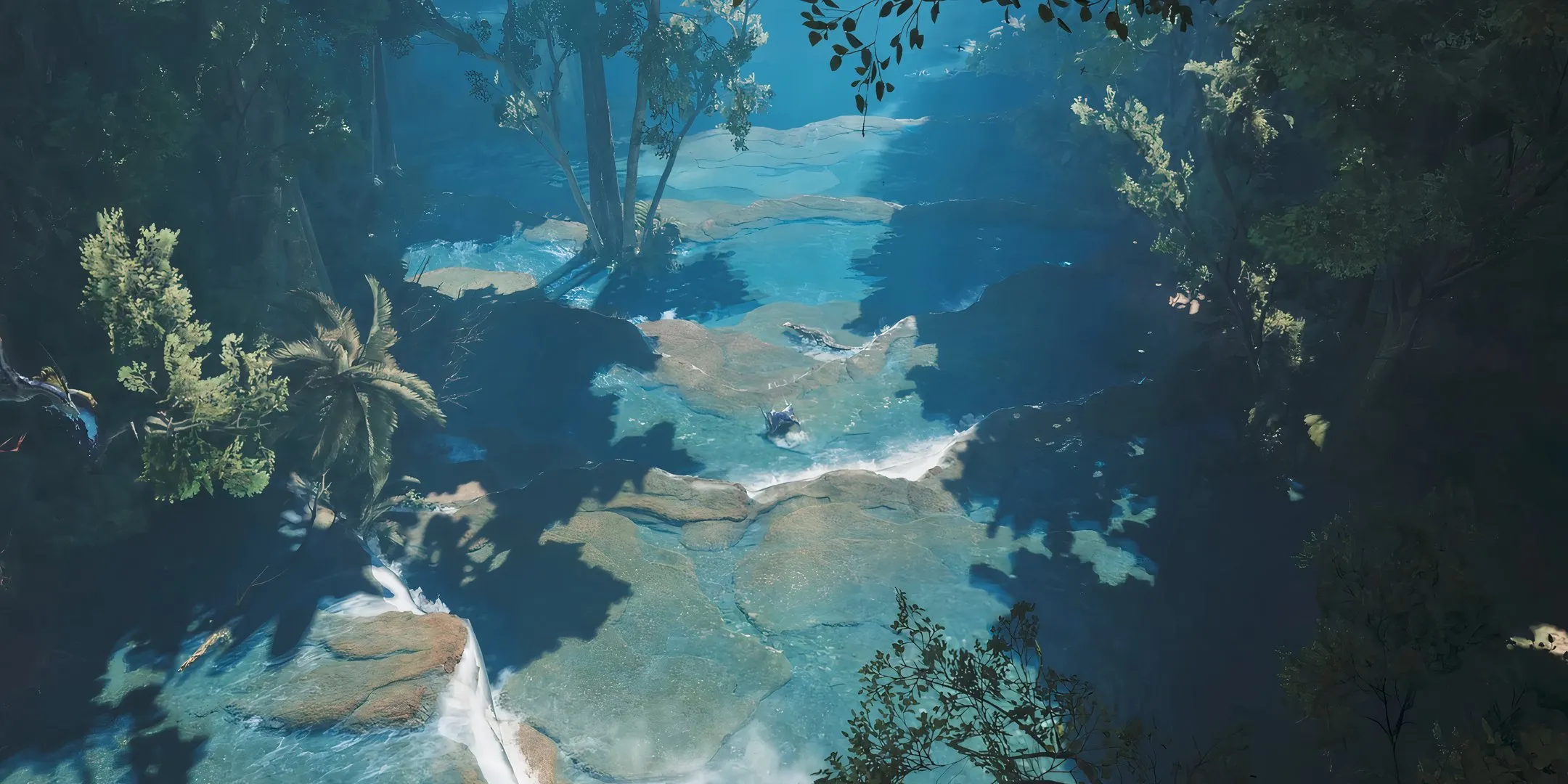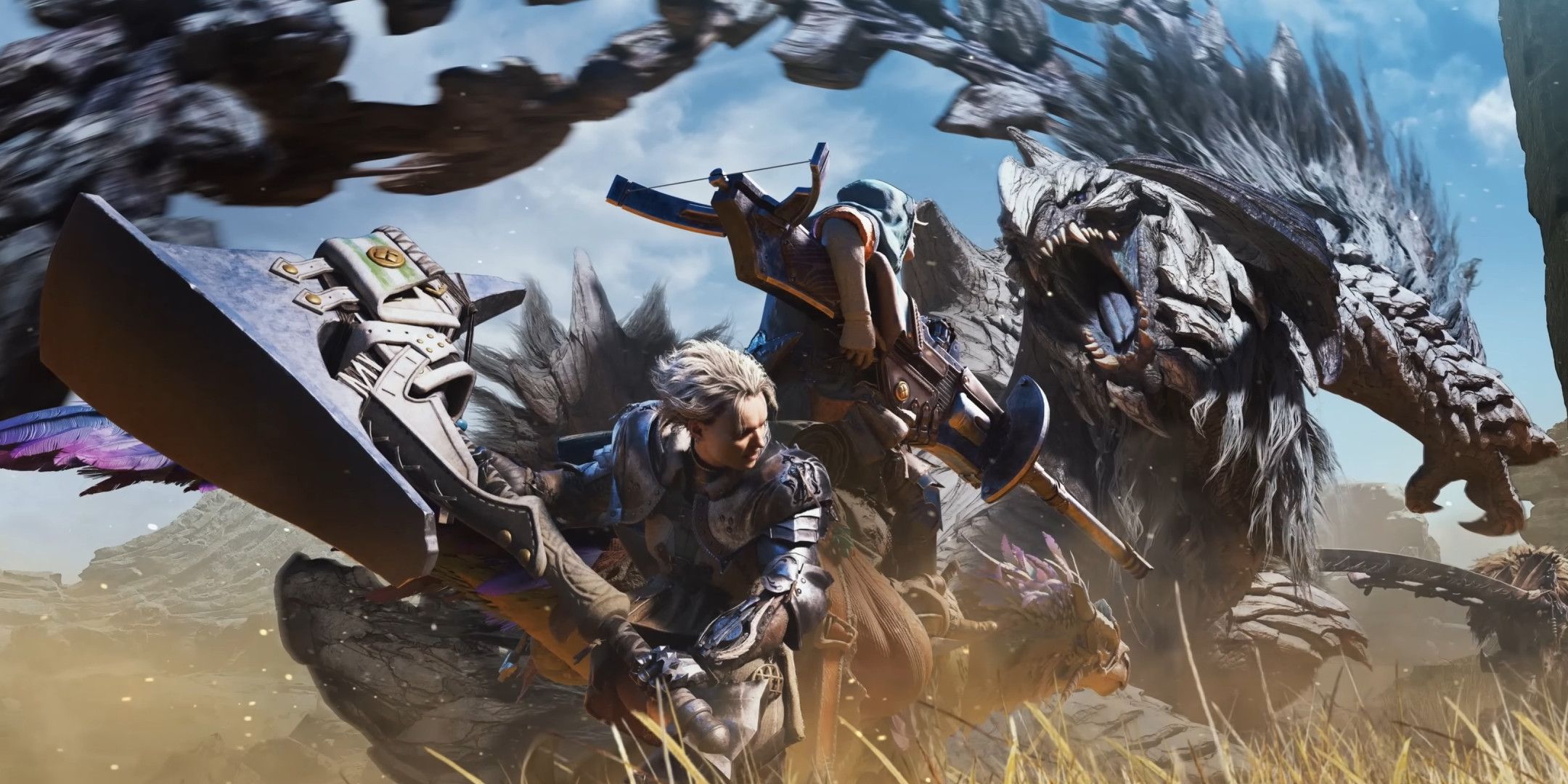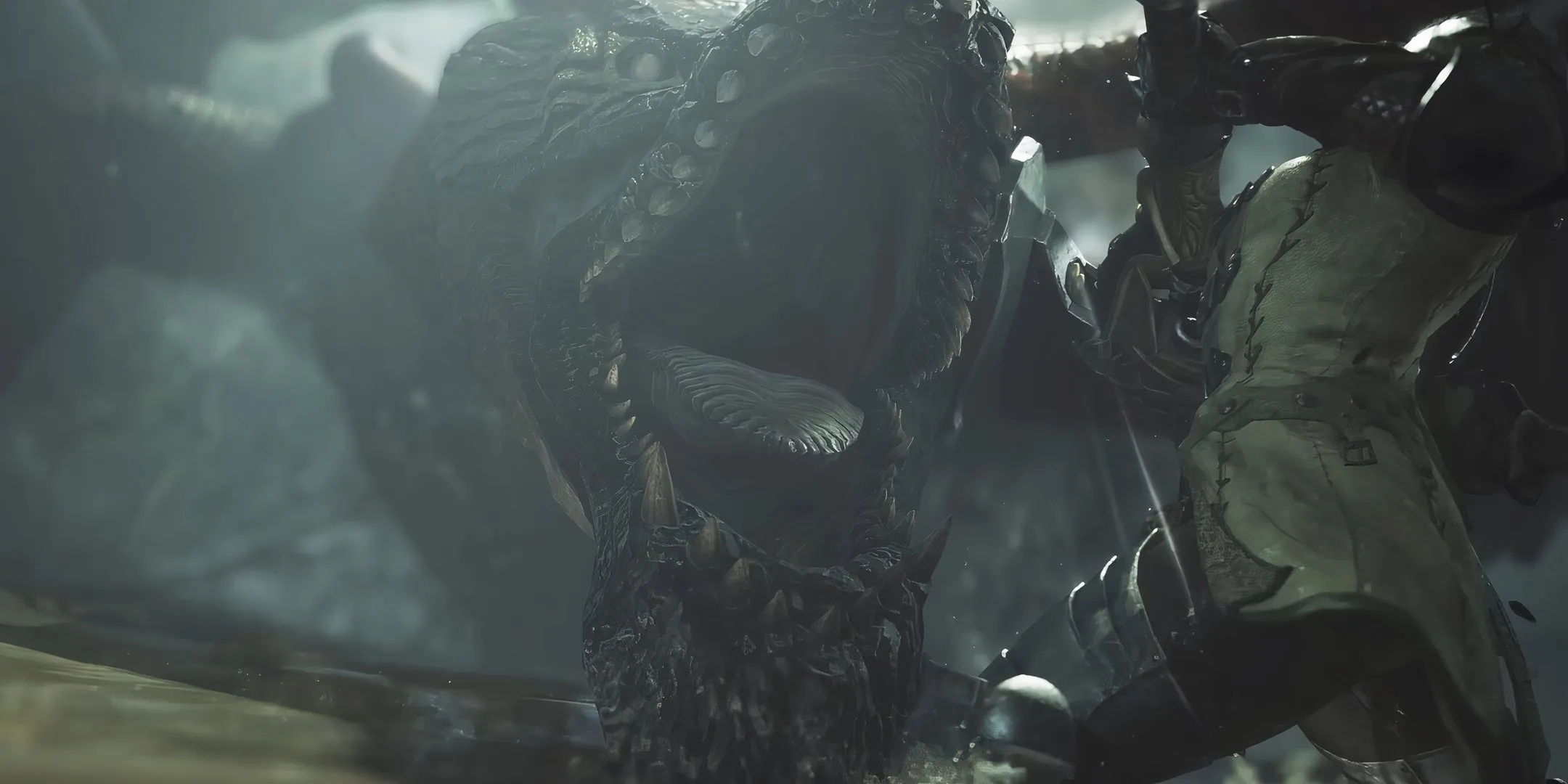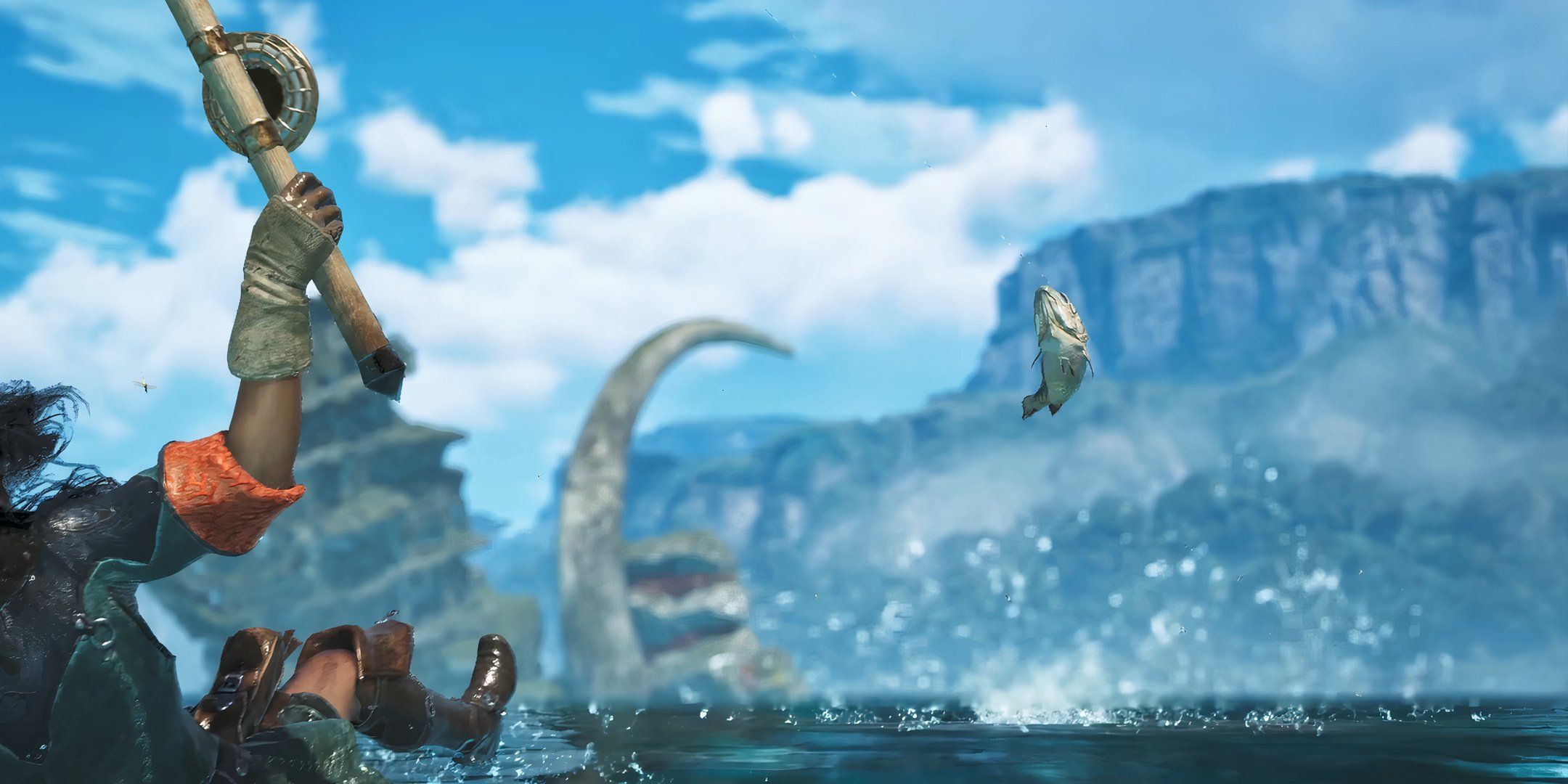We still have five months until Monster Hunter Wilds' release, which gives us plenty of time to watch each trailer in detail and soak up every bit of important information we can.
Thankfully, Capcom has been giving us a ton of information this week. A new trailer debuted during Sony's State of Play, revealing Monster Hunter Wilds' February 28, 2025 release date and a ton of new details about the game's second biome, the Scarlet Forest. The trailer featured three new monsters, story details, and a deeper exploration of the Scarlet Forest than ever before. Let's take a look at everything we've learned about Monster Hunter Wilds from the new trailer.
Take a closer look at the red forest
Although the Scarlet Forest was revealed in a trailer during Gamescom Opening Night Live, this is the first time we've gotten a deeper look into its sub-biomes and seasons. Like the Winward Planes, the Scarlet Forest features both a Fallow season and a Plenty season, with an Inclemency period serving as a transition point between the two.
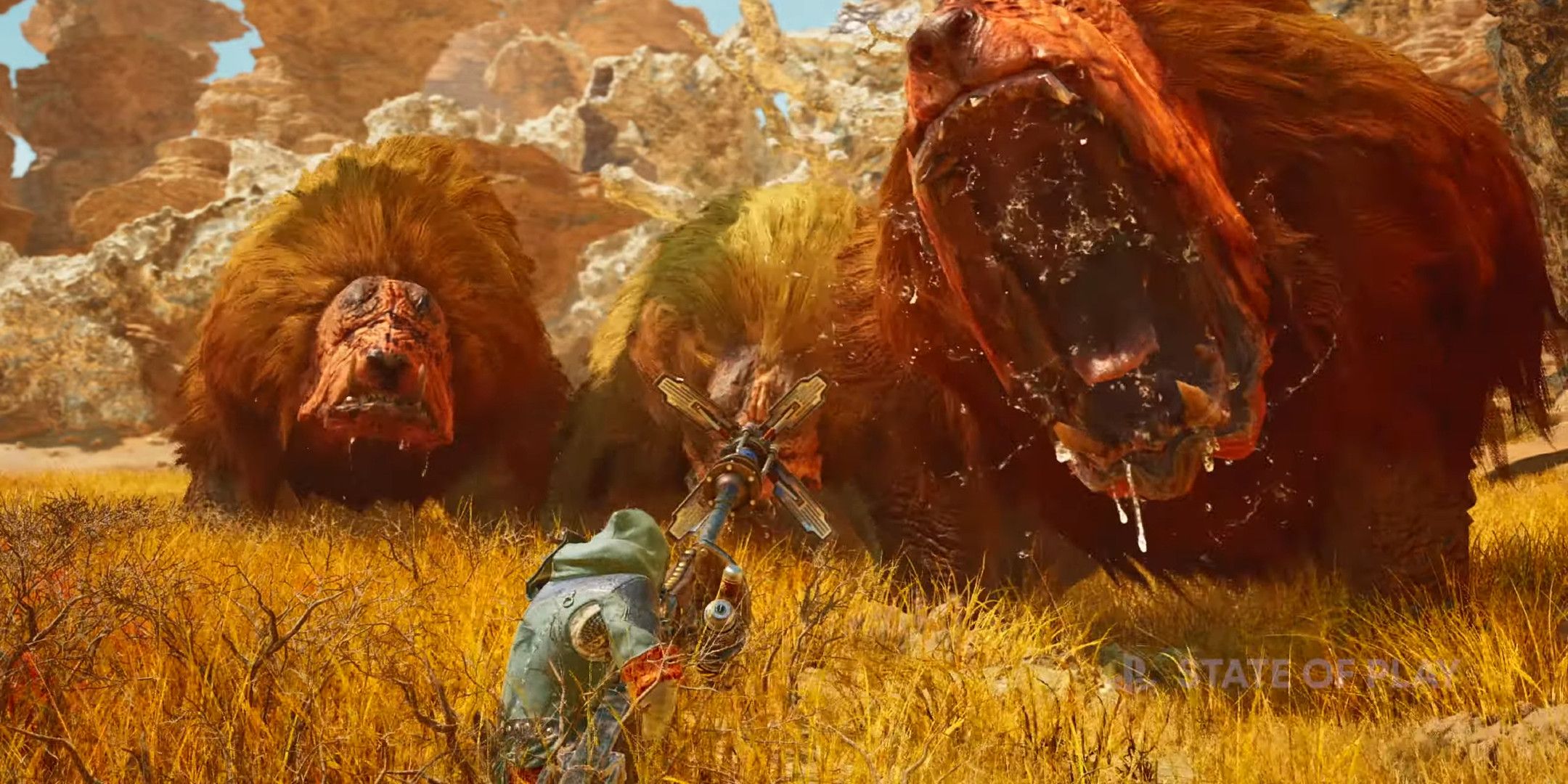
Related
How excited are you for Monster Hunter Wilds?
I'll be honest, I'm not a huge Monster Hunter fan, but I love how the series is growing in popularity. Given all the information we've seen so far for the new Monster Hunter Wilds, how would you rate your current interest level?
During Fallow, when vegetation is thin and forests are low in density, the deep red rivers that give the biome its name can be easily seen. The imbalance causes flooding, which turns the biome into a wetland, attracting new creatures to hunt and opportunities to interact with the environment. Once the harsh weather period ends, fertility begins, and the forest becomes a rich and vibrant environment, full of plant materials to collect and weevils that allow you to travel through zones or reach new areas.
The changing seasons and changing biomes are one of the defining characteristics of Wilds, and it’s great to finally see some of the ways that the weather affects hunting and exploration in the Scarlet Forest. The destructible wall that causes flooding in the Rathalos lair in Monster Hunter World’s Ancient Forest is one of my favorite mechanics in the entire series, and it feels like Wilds is leaning more towards those kinds of moments in Wilds.
Wild's flagship monster is Arkveld, also known as The White Wraith.
The first trailer finally reveals how the Wilds story will unfold. The Research Committee has sent two units to the Crimson Forest to hunt down the White Wraith, a wyvern long thought to be extinct, after it was reported to have attacked the home of a young boy named Nata. The creature's official name is Arkveld, and it's a flying wyvern with chain-like wings that it can use to cling to from a distance.
Like World's Nergigante and Rise's Magnamalo, Arkveld appears to be a story-focused monster that will serve as the player's first major obstacle before facing off against the Elder Dragons later in the game. We also briefly see Arkveld battle Rey Dau, the apex predator of the Windward Plains biome. The trailer seems to feature two different fights between these monsters. The first is set in a rainy area, suggesting it takes place in the Scarlet Forest during Inclimency, while the second takes place in the thunderstorms found during Inclimency in Windward Plains.
Two more monsters: Uth Duna and Qumatrice.
As expected, Monster Hunter Wilds introduces a ton of new monsters to the series. The trailer also features Uth Duna, a giant wyvern you'll encounter when Inclemency brings flooding to the Scarlet Forest. Uth Duna is the forest's apex predator and has the ability to secrete fluids to create a protective layer over its large, scaly body. The trailer suggests that you'll be facing this monster in large areas of still water, where it can move beneath the surface and pounce on you from unknown directions.
A new monster brings us back to the Winward Plains. Quematrice is a wyvern that drags its long tail down onto the ground to ignite the flammable liquid it produces. While Yian Kut-Ku and Anjaneth are sometimes referred to as Monster Hunter's firefowl, I think it's safe to say that Quematrice, inspired by the legendary firefowl known as the Cockatrice, is now Monster Hunter's official firefowl.
Observations from the new Monster Hunter Wilds trailer
There are a few more details and moments from the trailer worth mentioning:
- While there were some fears that Wilds' more open-world approach to map layout might leave little room for the verticality and intricate interconnected level design that characterize Monster Hunter's biosphere, parts of the trailer did reveal that the Scarlet Forest will feature plenty of canopies to climb and tall places to swing from.
- The new local tribe of Lynians is called the Wudwuds, and they are the cutest little guys I've ever seen.
- You can throw barrel bombs at monsters.
- Fishing is back and should be more useful since you'll be spending more time in biomes further away from the hub.
- Does anyone else think the new manager looks a lot like Margaret Qualley?
We’ve only seen nine months and two biomes of Monster Hunter Wilds, so there’s still a lot to learn before the game launches on February 28, 2025.
